I want to implement my own DnD in pure Javascript - first for learning purposes - then maybe i'll use it - and i stumbled upon this bubble/capture concept. I thought i got it, by reading the accepted answer on this question: What is event bubbling and capturing?, and other articles as well.
But i didn't - because i can't explain why this 2 pieces of code don't produce the same result.
Why the order in which i register this events - matters? I assume they should be fired in the same order - no matter how they were registered - by the rules of capturing/bubbling. It's not the case.
Given that you click on div3 - this happens:

Case 1: jsBin
Case 2: also jsBin
Case 3 - it's the first answer of the above mentioned question
Html it's the same:
<div id="div1">
div 1
<div id="div2">
div 2
<div id="div3">
div3
</div>
</div>
</div>
And the Case 1 Js:
var div1 = document.querySelector("#div1");
var div2 = document.querySelector("#div2");
var div2 = document.querySelector("#div3");
/* div1 */
div1.addEventListener("click", function (event) {
log("capture phase: you clicked on div 1");
}, true);
div1.addEventListener("click", function (event) {
log("bubble phase: you clicked on div 1");
}, false);
/* div2 */
div2.addEventListener("click", function (event) {
log("capture phase: you clicked on div 2");
}, true);
div2.addEventListener("click", function (event) {
log("bubble phase: you clicked on div 2");
}, false);
/* div3 */
div3.addEventListener("click", function (event) {
log("capture phase: you clicked on div 3");
}, true);
div3.addEventListener("click", function (event) {
log("bubble phase: you clicked on div 3");
}, false);
var $log = $("#log");
function log(msg) {
$log.append('<p>' + msg + '</p>');
}
Case 2 - javascript:
var div1 = document.querySelector("#div1");
var div2 = document.querySelector("#div2");
var div2 = document.querySelector("#div3");
/* capture events */
div1.addEventListener("click", function (event) {
log("capture phase: you clicked on div 1");
}, true);
div2.addEventListener("click", function (event) {
log("capture phase: you clicked on div 2");
}, true);
div3.addEventListener("click", function (event) {
log("capture phase: you clicked on div 3");
}, true);
/* bubbling events */
div1.addEventListener("click", function (event) {
log("bubble phase: you clicked on div 1");
}, false);
div2.addEventListener("click", function (event) {
log("bubble phase: you clicked on div 2");
}, false);
div3.addEventListener("click", function (event) {
log("bubble phase: you clicked on div 3");
}, false);
Where is the fallacy in my thinking? What did i miss? Thanks :)